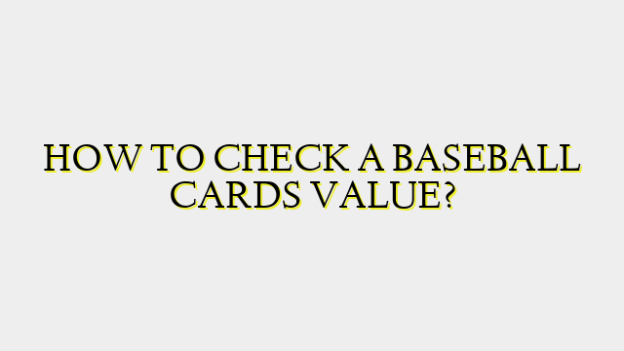The first thing you need to do when trying to determine the value of a baseball card is inspect the physical condition of the card. The condition or grade of the card is often the most important factor that impacts its value. There are professional grading services like PSA, BGS, and SGC that assign official numerical grades to cards on a scale from 1 to 10 based on the card’s state of preservation. A grade of 1 would indicate a very poor condition card that is damaged, while a 10 is a flawless mint condition card. The higher the grade the more valuable the card.
If you are unsure of the precise grade, you can get a sense based on visual inspection. Look at the corners – are they sharp and undamaged or are they rounded or bent? Examine the edges for any creases, bends, or nicks. Inspect the surface for any scratches, stains, marks or imperfections on the front or back of the card. Also check that the card is still tightly attached to the backing and wasn’t removed as this can damage the edges. Take note of any flaws you observe to get an idea of the condition. Near mint cards with few flaws can grade between 7-9 while heavily played cards with multiple defects would grade between 4-6.
After analyzing the condition, you’ll need to identify key details about the specific card like the player, year, brand/set, parallel/variation, and any special edition markings. Some of the most valuable brands include Topps, Bowman, Pristine, and Upper Deck. Certain years that are particularly desirable for certain players include their rookie cards from when they first appeared in a set. Tracking down parallel or limited issue versions stamped with labels like “refractor”, “patch”, “auto”, or “relic” can significantly boost value for selective cards. Knowing all relevant identifying details about the specific card you have allows for more targeted value comparisons.
With the condition and identifying specifics noted, you can then start searching online marketplaces, price guides, auction results, and dealer/retailer websites to find recent sales data points for comparison cards. Services like eBay allow you to search “sold listings” to view the final sale price of identical or similar quality/year/player cards. Be aware that some asking prices listed may not represent what a card actually sells for. Price guide books and websites from companies like Beckett, PSA, and Mavin track average values over time but actual sale prices can vary. Checking multiple sources gives you a useful value range indication.
Beyond just raw sales data, you’ll also want to factor in broader baseball card market trends and the current supply/demand dynamic for that specific player or card. Is the player a newly retired star whose cards may be hot at the moment? Are they a rookie that just had a breakout season boosting interest? Cards for active superstar players tend to hold strong value. Conversely, cards for unremarkable players who lacked longevity may have little present demand. Macro trends like an overall up or down market can also impact prices. Layering in these influence variables provides a fuller value picture.
An important consideration is also the grade level you are pricing your card at. As mentioned, condition is paramount so ensure the value matches the approximate grade assessed for your specific card, not a gem mint PSA 10 condition if yours has more flaws. Also carefully check any listing details like authenticity guarantees or mention of restoration work, as such factors would reduce desirable and price. Take your time cross-referencing data points and factoring in these variables to arrive at the most accurate estimated value before deciding whether to sell, keep, or upgrade your card. With thorough research, you can confidently determine a baseball card’s worth.

